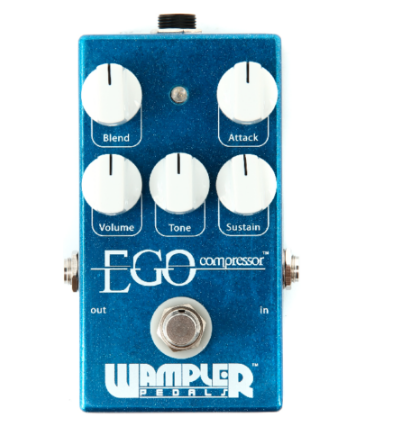Products Category
- FM Transmitter
- 0-50w 50w-1000w 2kw-10kw 10kw+
- TV Transmitter
- 0-50w 50-1kw 2kw-10kw
- FM Antenna
- TV Antenna
- Antenna Accessory
- Cable Connector Power Splitter Dummy Load
- RF Transistor
- Power Supply
- Audio Equipments
- DTV Front End Equipment
- Link System
- STL system Microwave Link system
- FM Radio
- Power Meter
- Other Products
- Special for Coronavirus
Products Tags
Fmuser Sites
- es.fmuser.net
- it.fmuser.net
- fr.fmuser.net
- de.fmuser.net
- af.fmuser.net ->Afrikaans
- sq.fmuser.net ->Albanian
- ar.fmuser.net ->Arabic
- hy.fmuser.net ->Armenian
- az.fmuser.net ->Azerbaijani
- eu.fmuser.net ->Basque
- be.fmuser.net ->Belarusian
- bg.fmuser.net ->Bulgarian
- ca.fmuser.net ->Catalan
- zh-CN.fmuser.net ->Chinese (Simplified)
- zh-TW.fmuser.net ->Chinese (Traditional)
- hr.fmuser.net ->Croatian
- cs.fmuser.net ->Czech
- da.fmuser.net ->Danish
- nl.fmuser.net ->Dutch
- et.fmuser.net ->Estonian
- tl.fmuser.net ->Filipino
- fi.fmuser.net ->Finnish
- fr.fmuser.net ->French
- gl.fmuser.net ->Galician
- ka.fmuser.net ->Georgian
- de.fmuser.net ->German
- el.fmuser.net ->Greek
- ht.fmuser.net ->Haitian Creole
- iw.fmuser.net ->Hebrew
- hi.fmuser.net ->Hindi
- hu.fmuser.net ->Hungarian
- is.fmuser.net ->Icelandic
- id.fmuser.net ->Indonesian
- ga.fmuser.net ->Irish
- it.fmuser.net ->Italian
- ja.fmuser.net ->Japanese
- ko.fmuser.net ->Korean
- lv.fmuser.net ->Latvian
- lt.fmuser.net ->Lithuanian
- mk.fmuser.net ->Macedonian
- ms.fmuser.net ->Malay
- mt.fmuser.net ->Maltese
- no.fmuser.net ->Norwegian
- fa.fmuser.net ->Persian
- pl.fmuser.net ->Polish
- pt.fmuser.net ->Portuguese
- ro.fmuser.net ->Romanian
- ru.fmuser.net ->Russian
- sr.fmuser.net ->Serbian
- sk.fmuser.net ->Slovak
- sl.fmuser.net ->Slovenian
- es.fmuser.net ->Spanish
- sw.fmuser.net ->Swahili
- sv.fmuser.net ->Swedish
- th.fmuser.net ->Thai
- tr.fmuser.net ->Turkish
- uk.fmuser.net ->Ukrainian
- ur.fmuser.net ->Urdu
- vi.fmuser.net ->Vietnamese
- cy.fmuser.net ->Welsh
- yi.fmuser.net ->Yiddish
How To Get the Most From Your Compressor Pedal — Part 1
Date:2020/3/7 10:06:27 Hits:

Most guitarists associate compressor pedals with snappy country licks, spanky funk rhythm, and clean, sustained, single-line leads. While these are iconic sounds, compressor pedals can be set up in a variety of ways, making them suprisingly versatile; from subtle to over the top. The aim of this two-part article is to explain how a guitar compressor works from a practical view, highlight some features of compressor pedals, show some tried-and-true compressor uses, and introduce some not-so-obvious ones. This knowledge should help you get the most flexibility and usage from your compressor.
What It Is
For clarity, a compressor is a device that reduces the dynamic range of an audio signal; it makes the quiet sounds louder and the loud sounds quieter. The net effect is evenness and sustain, as the attack of a note is softer and its decay is louder. Considering that the guitar is a plucked instrument with an inherently heavy attack and relatively sharp decay, compression can either enhance or radically alter the sound of a guitar.
How It Works
With this in mind, compressor pedals need at least two controls to be effective. A control for the amount of compression, which may be called “sustain,” “sensitivity,” etc., will increase the overall effect when turned up. Therefore, with more loud sounds being pushed down in volume, or compressed, the overall sound seems quieter and a volume control is needed to compensate. The MXR Dyna Comp , DOD Compressor 280, and the Red Witch Grace are great two-knob compressor examples.
Many comps have more controls, including Attack, Tone, and Blend. Attack controls how quickly the compression actually happens, which is why a higher setting can give the note a “pop” as you strike it. Tone is often a high-end boost, which is needed to compensate for the fact that compressing the peaks in a signal can make it seem duller; the peaks give off a lot of high-end. Blend allows the compressed signal to be blended with your original, uncompressed sound. This control gives amazing subtlety to compression. No matter how heavily compressed the setting is, the uncompressed sound can be turned up above it. This gives you the best qualities of both at any level. The Wampler Ego and Seymour Duncan Vise Grip have variations on all three of these controls.
More Control
Adding a control for the input gain not only allows tailoring the compression to the amount of signal you’re feeding it, but it also gives more control over the amount of compression. Higher input levels would yield more compression and even add a bit of break-up to the sound. The Keeley 4-Knob has a Clipping knob that controls input level and the Budda Chakra has a knob labeled Gain.
Features and Extras
There are a few compressors with deep features and extra effects built-in. The Rivera Sustain Shaman has a switch labeled “Super Sustain” that holds the notes for an incredibly long time. It also has two switchable channels with separate attack and sustain settings. The Joe Meek floorQ has super-deep controllability. It has controls for attack and release times, “Slope” or compression ratio, threshold, which is labeled “Compress,” plus input and output levels. This many controls can be daunting but it will allow you to finely tune every aspect of the compression. The Pigtronix Philosopher’s Tone combines a distortion circuit with the compressor and the other Philosopher pedals offer a variety of distortion flavors. The Philosopher King even adds an ADSR envelope for truly unique tones.
With a working knowledge of compressors and their options, dialing in appropriate sounds will make sense. In Part 2 and Part 3, I’ll show in detail some typical and not-so-typical compressor settings and uses.
Leave a message
Message List
Comments Loading...





